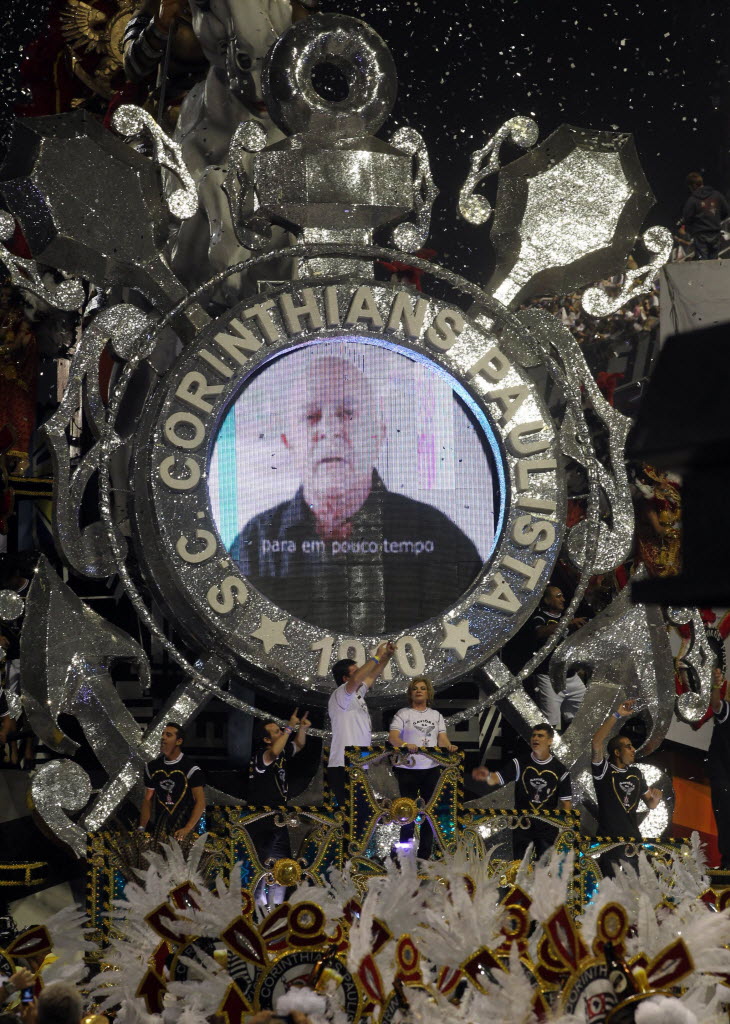
I’m reporting from the Carnival of Recife, in Pernambuco – but more on that later.
Before I left São Paulo, I caught a striking take on the samba parade.
Former President Lula is in treatment for cancer, so he could not march this year with Gaviões da Fiel, the samba school associated with Corinthians, his favorite football team. We knew that as a result, they would pay homage to him this year.
But we didn’t expect this. The hour-long show went through his life history, the political battles that led to the creation and success of the Worker’s Party (PT), which has dominated Brazilian politics for almost a decade, and its successes and vision for the future, all to a samba beat. We got the fall of the dictatorship, migration tales, and the major policy initiatives of the 21st century.
Essentially, what we saw was a history of modern Brazilian politics told through dance, and the costumes and placards donned by half-clothed women.
Continue on to see how it went
The man was born in the arid Northeast of Brazil, in a small poor town in the state of Pernambuco. Like many others at the time, his family migrated from the Northeast, which was languishing in poverty, to the industrial Southeast – in his case, São Paulo – to find work. He became a metal worker, and rose up through the system to be a political leader in the left-leaning union system. Here we see a version of him in traditional Northeastern costume, in front of two placards with distinctly Northeastern artwork.
Yes, that is a samba dancer carrying a card that reads “general strike”. Note the hard hat. What is unfortunately missing from our photo archives is the legions of these, men and women, that made up this part of the parade. In the late 70s, during the military dictatorship, the unions were involved in a set of contentious strikes, which eventually led to Lula being imprisoned for a month. There was also a float of him in jail.
This is a re-enactment of the marches in the ‘Diretas Já‘ movement, which demanded “direct elections now” at the end of military dictatorship, in 1984. Unlike some of the other parts of this parade, virtually all of the major post-dictatorship political players, left and right, consider this a major moment of victory for democracy.
The Worker’s Party was founded in 1980, and entered the official political scene with the fall of the dictatorship. Lula went on to lose presidential elections in 1989, 1994, and 1998. Here we see a float with banners naming issues which dominated opposition, and some of the goals of his presidency which started in 2003: food, health, education, etc.
A dancer wearing a house for a head, presumably meant to represent “Minha casa, minha vida”, or “My house, My life,” one of Lula’s social programs, this one aimed at expanding housing. His most famous was “Bolsa Familia”, a cash-transfer program to the poorest that boosted his popularity massively in the Northeast. These moderate programs, combined with relatively pro-business macroeconomic policy, dominated his presidency until hand-picked successor Dilma Rousseff took over in 2011.
Some other remarkable installations were dancers dressed as the “worker card,” a movement meant to represent the formalization of the labor sector, and one dedicated to hopes and dreams in the future of Brazil. Watch the video for the whole thing.
Lula speaking in a taped recording. Bald, because of the cancer treatment.
Links:
Watch the full, hour-long video on Youtube
More pictures (Folha de S.Paulo)









